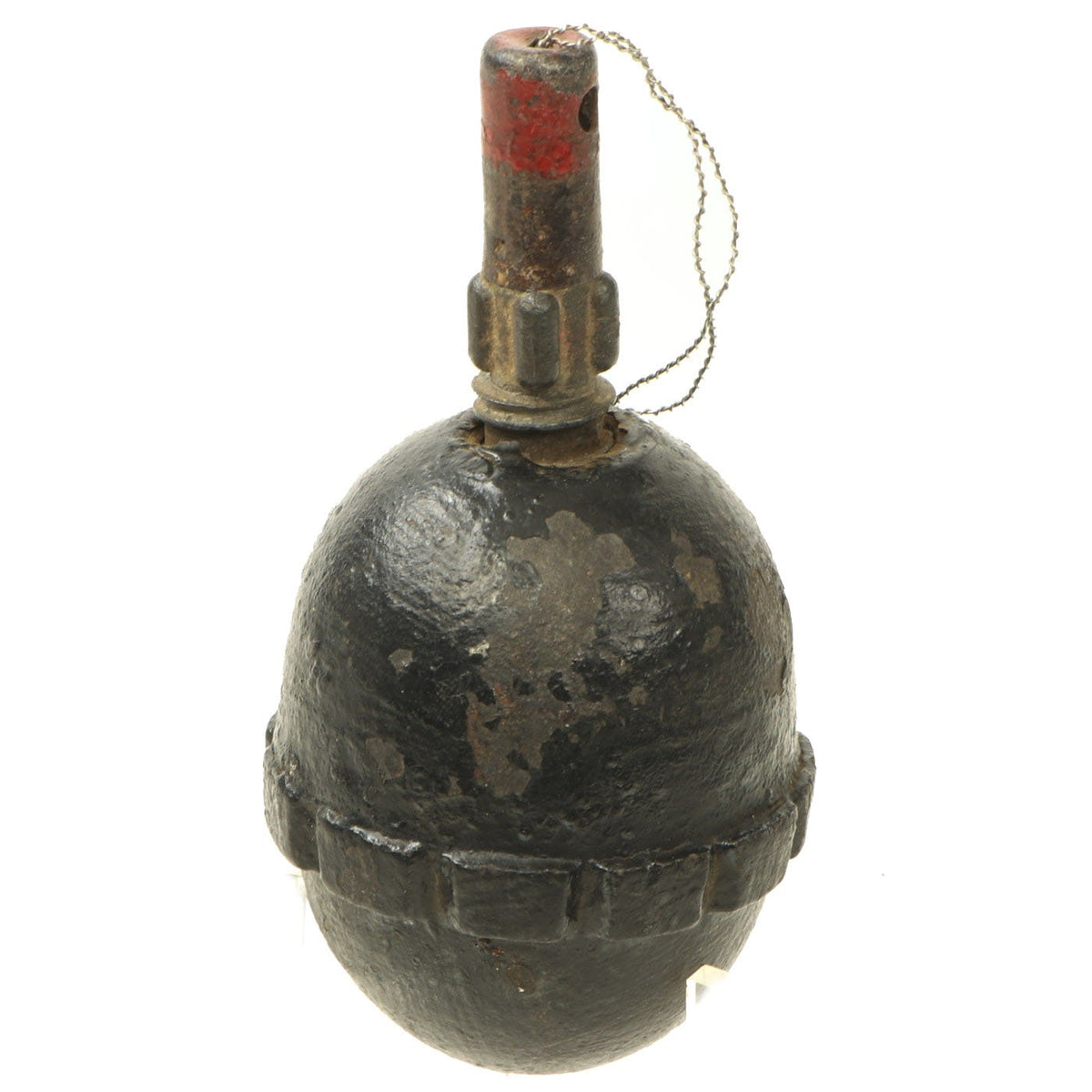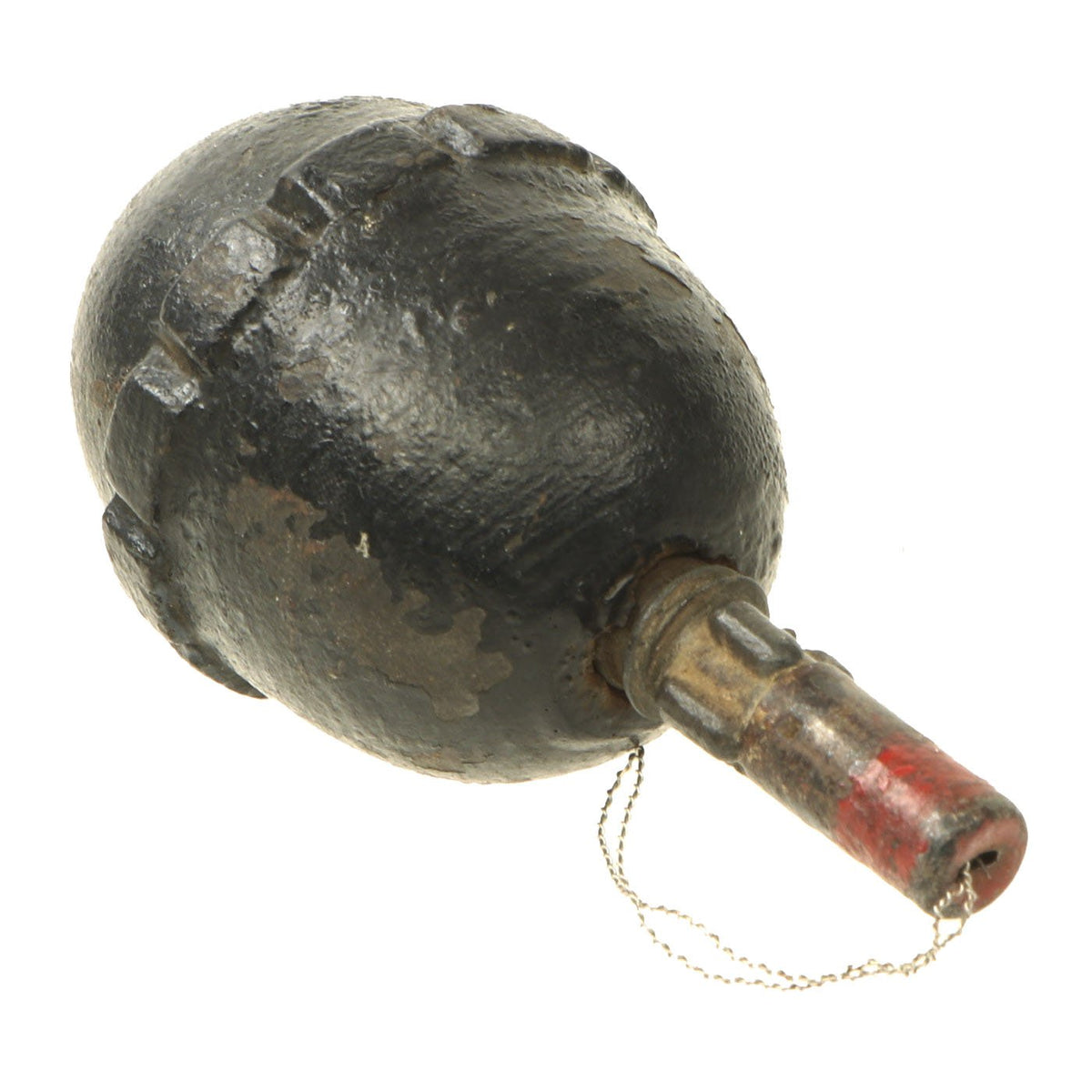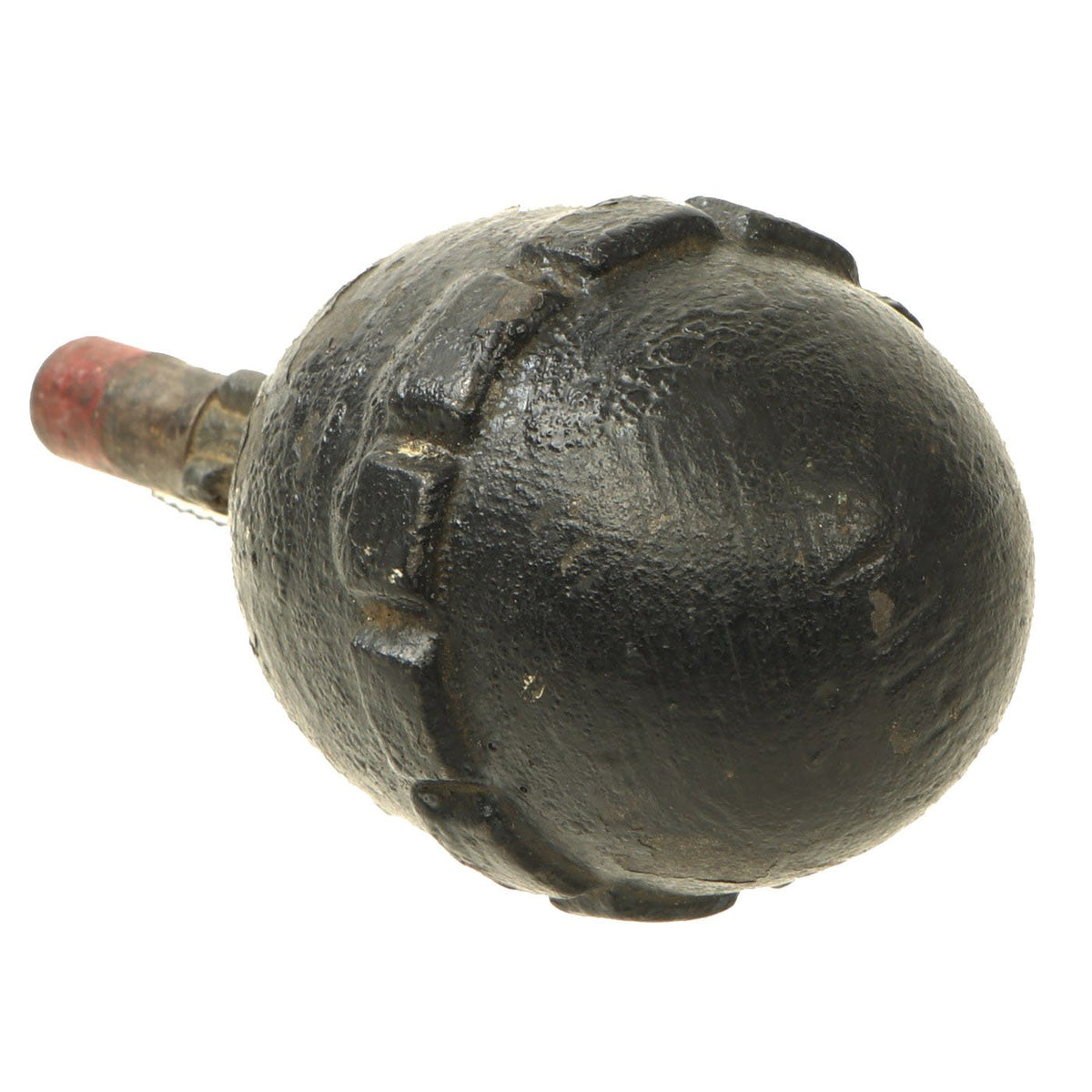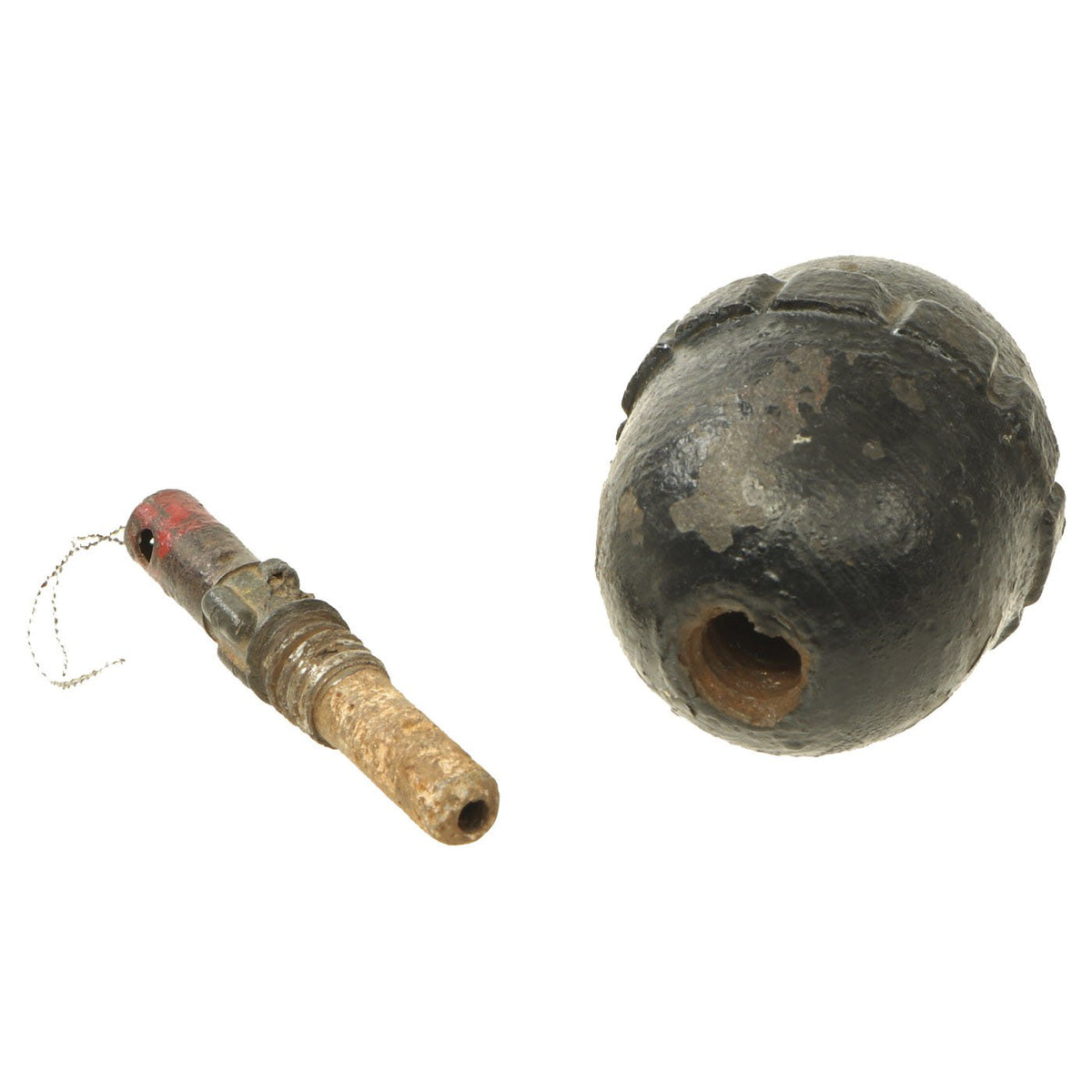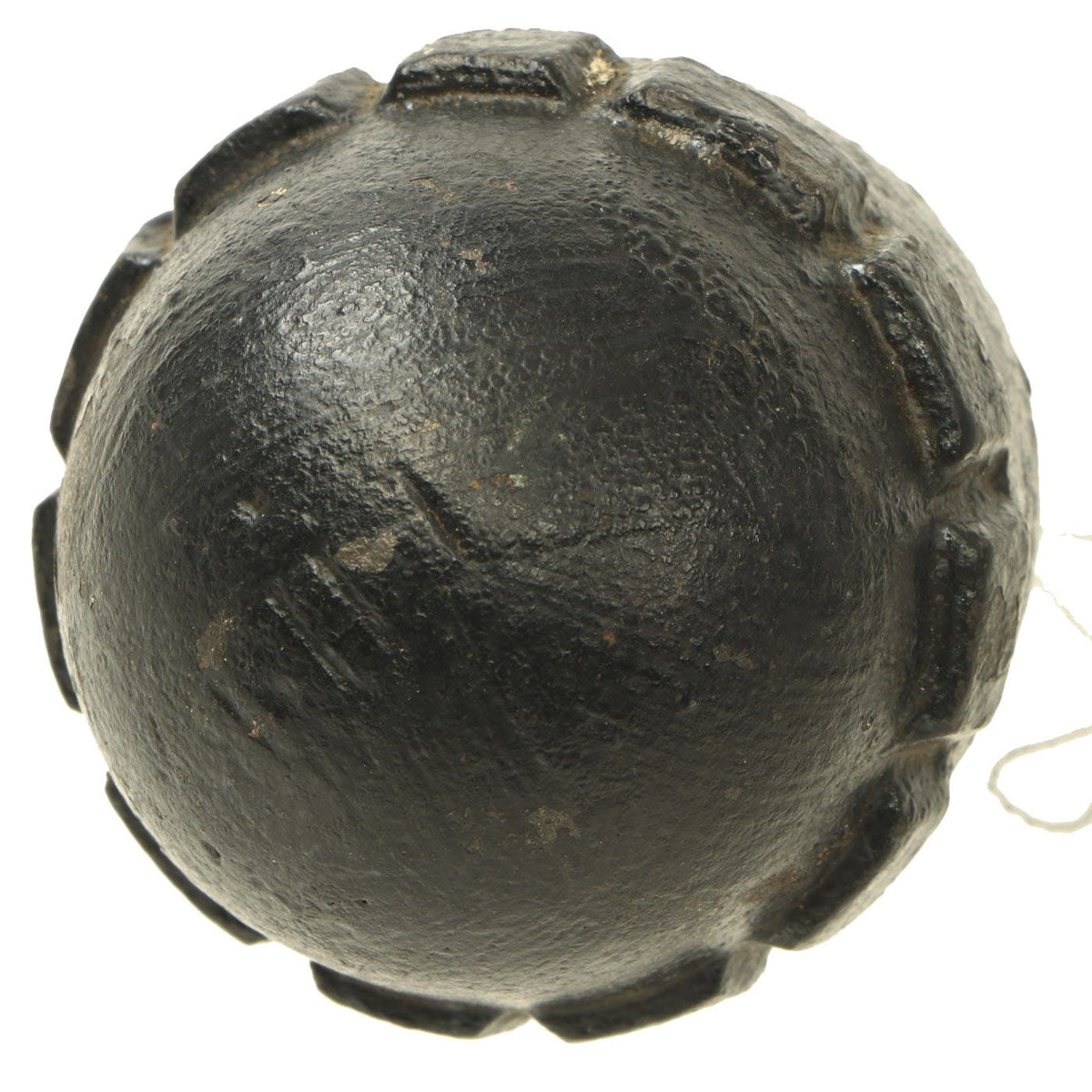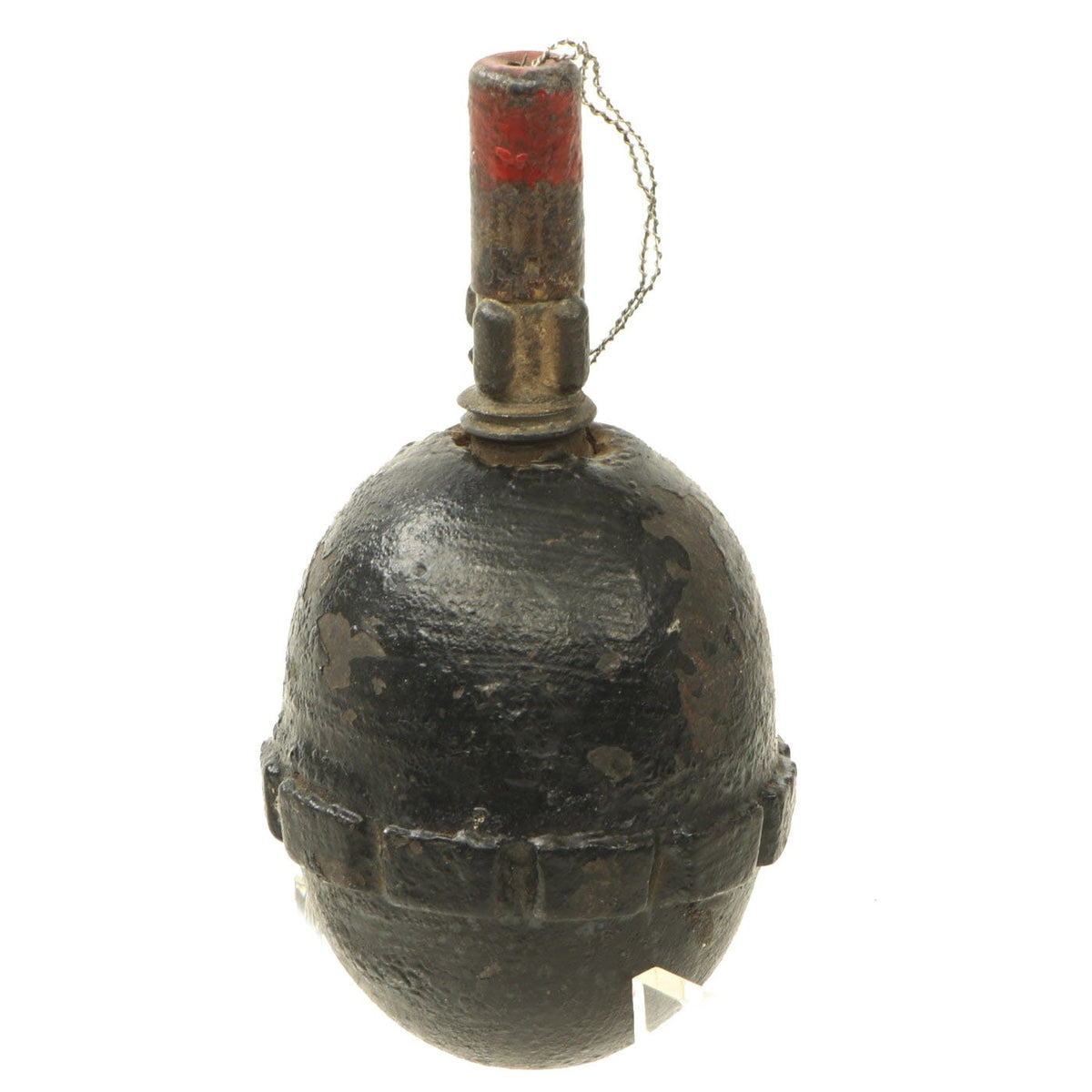Original German WWI Model 1917 Inert Egg Hand Fragmentation Grenade – Eierhandgranate Original Items
$ 325,00 $ 97,50
Original Item: Only One Available. The Eierhandgranate (“egg hand grenade”) is the name given to a model of a hand thrown fragmentation grenade manufactured in Germany, also known as Mod. 1917. A similar grenade called the Model 39 grenade was later introduced by Germany and used in World War II.
This is a nice inert example of the second type, with the raised central band, and it is in very nice condition, with lots of the original paint present. The original M1915 zinc traction ignition fuze still unscrews from the body correctly, and has a replica pull wire installed. The bottom of the grenade body is marked I H B.
A perfect chance to complete your WWI ordnance collection with a hard to find German grenade!
Germany entered World War I with this single grenade design: a heavy 750-gram (26 oz) ball-shaped fragmentation grenade for use only by pioneers in attacking fortifications. It was too heavy for regular use on the battlefield by untrained troops and not suitable for mass production. This left Germany without a standard-issue grenade and improvised designs similar to those of the British were used until a proper grenade could be supplied.
This was accomplished with the design of the Stielhandgranate (“Stalk Hand Grenade), under the name M1915 (Model 1915). This design was refined several times, however there were still some situations where the somewhat cumbersome design was found to be lacking.
This led to the development of the Model 17 Eierhandgranate (“egg grenade”), a small defensive and offensive hand grenade. It was small, and the average soldier could throw it 40 meters or farther. It was more portable than the heavier Kugelhandgranate and less awkward to handle than the stick grenade. The body of the grenade was initially smooth and thus difficult to hold so the design was modified with the addition of a raised band to provide better grip.
Fast Shipping with Professional Packaging
Thanks to our longstanding association with UPS FedEx DHL, and other major international carriers, we are able to provide a range of shipping options. Our warehouse staff is expertly trained and will wrap your products according to our exact and precise specifications. Prior to shipping, your goods will be thoroughly examined and securely secured. We ship to thousands clients each day across multiple countries. This shows how we're dedicated to be the largest retailer on the internet. Warehouses and distribution centres can be located throughout Europe as well as the USA.
Note: Orders with more than one item will be assigned a processing date depending on the item.
Before shipping before shipping, we'll conduct a thorough inspection of the items you have ordered. Today, the majority of orders will be delivered within 48 hours. The delivery time will be between 3-7 days.
Returns
The stock is dynamic and we cannot completely manage it because multiple stakeholders are involved, including our factory and warehouse. So the actual stock may alter at any time. It's possible that you may not receive your order once the order has been made.
Our policy is valid for a period of 30 days. If you don't receive the product within 30 days, we are not able to issue a refund or an exchange.
You can only return an item if it is unused and in the same state as the day you received it. You must have the item in its original packaging.
Related products
Uncategorized
Uncategorized
Uncategorized
Uncategorized
Uncategorized
Angolan Rebel 1970s era 60mm Inert Display Mortar from Angolan Civil War Original Items
Uncategorized
Uncategorized
Uncategorized
Uncategorized
Uncategorized
Band of Brothers ORIGINAL GERMAN WWII Le. F.H. 18 10.5cm ARTILLERY PIECE Original Items
Uncategorized
Uncategorized
Uncategorized
Uncategorized
Uncategorized
Australian WWII Owen MK1 Machine Carbine SMG Custom Fabricated Replica with Sling Original Items
Uncategorized
Armoured Fighting Vehicles of the World: AFVs of World War One (Hardcover Book) New Made Items
Uncategorized
Uncategorized
Uncategorized
